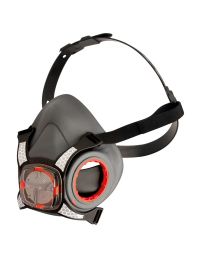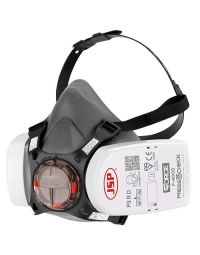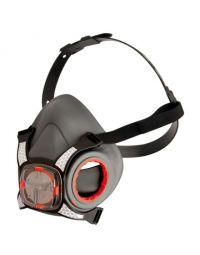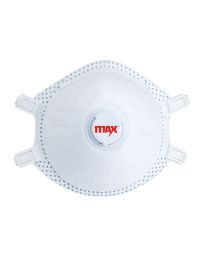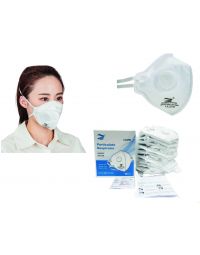HSE published a report at the end of 2021 highlighting 12,000 lung disease deaths estimated to be linked to past exposures at work, and 17,000 estimated new cases of self-reported breathing or lung problems caused or made worse by work.
The safety of everyone on site is paramount to CMT group, so we’ve put together this article to help give insight on:
- Common excuses used for not wearing masks
- How to best communicate the importance of wearing RPE correctly
By the time you've finished reading our guide, we’ll review standards and regulations you need to know and follow when purchasing the correct PPE too.
A quick intro to RPE & Masks
The main benefit of wearing a mask is that it helps prevent you from getting ill. Specifically, it helps prevent the development of illnesses which could affect your airways – which could reduce the quality and length of your life.
Wearing a mask can stop you from developing the symptoms of respiratory illness caused by inhalation of hazardous substances at work. For example: coughing, wheezing, shortness of breath, chest tightness or difficulty in breathing.
Common reasons people are not wearing masks at work


“I don’t think I need it” / “Only a quick job”
Many dangerous substances exist as a fine dust or fume, or as a gas or vapour which you can’t see in the air.
Employers must work with their employees to reduce the risks to from potential exposures to these dangerous substances. It may be that a risk assessment indicates that only a few minutes’ exposure to a substance in the air could harm your health, whether now or later.
If wearing a mask is the method your employer has chosen to protect your health, it’s important that you’re involved in selecting the mask you are going to wear.
“It's too uncomfortable”
Different masks are available, with different sizes and designs. Depending on the shape and size of your face, you may require a different mask. One size does not fit all.
Some masks require a tight fit to your face. With these types, it is essential that you’re fit tested as part of the selection process to ensure that the mask forms a good seal to your face.
If this is something you can’t tolerate, you need to talk to your employer or safety representative about using a different type of mask which is more comfortable and still provides the level of protection needed.
Disposable masks, such as dust masks, should be replaced every day. Reusable masks will eventually become clogged, and you may notice it becomes harder to breathe through – which means the filter needs changing.
“Other people don’t get ill”
Some people have said they don’t wear their masks because other people they work with don’t wear their masks and are never ill. However, it’s important to remember that damage to health is not always immediately noticeable.
People can be affected differently following exposure to hazardous substances – and, in the case of long-term ill-health – we don’t know who’s more likely to become ill.
Why gamble with your health? An easy way to protect your long-term health is to wear your mask, if one has been provided, and wear it correctly.
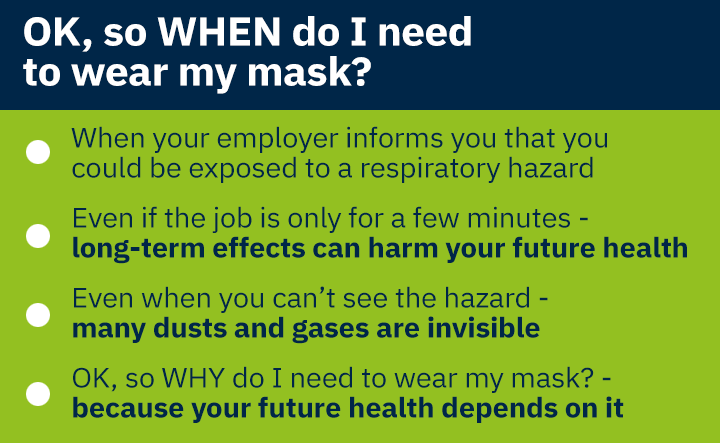

Below is a summary of the accreditations you’ll need to know when sourcing and purchasing masks:
In Europe, Respirators must meet the European standard EN 149: 2001 which has three classes of disposable particulate respirators:
FFP1, FFP2 and FFP3.
FFP1
FFP1 refers to the least filtering of the three masks with an aerosol filtration of at least 80% and leakage to the inside of maximum 22%. This mask is mainly used as a dust mask (home renovations and various types of work).
FFP2
FFP2 masks have a minimum of 94% filtration percentage and maximum 8% leakage to the inside. They are mainly used in construction, agriculture, and by healthcare professionals against influenza viruses. They are currently being used for protection against the coronavirus.
FFP3
FFP3 masks are the most filtering mask of the FFPs. With a minimum filtration percentage of 99% and maximum 2% leakage to the inside, they protect against very fine particles such as asbestos.
The UK recommends the use of FFP3 respirators when caring for patients in areas where high risk aerosol generating procedures (AGPs) are being performed. When FFP3 respirators are not available, then FFP2 respirators may be used.
The World Health Organisation (WHO) recommends FFP2 and *N95 respirators for AGPs and these are widely used in other countries.
*The N95 respirator is not CE marked but has been tested against standards similar to European standards.
Respirators are tested to the relevant European Standards. All respirators carry the CE mark plus the European Standard and performance category markings. These are:
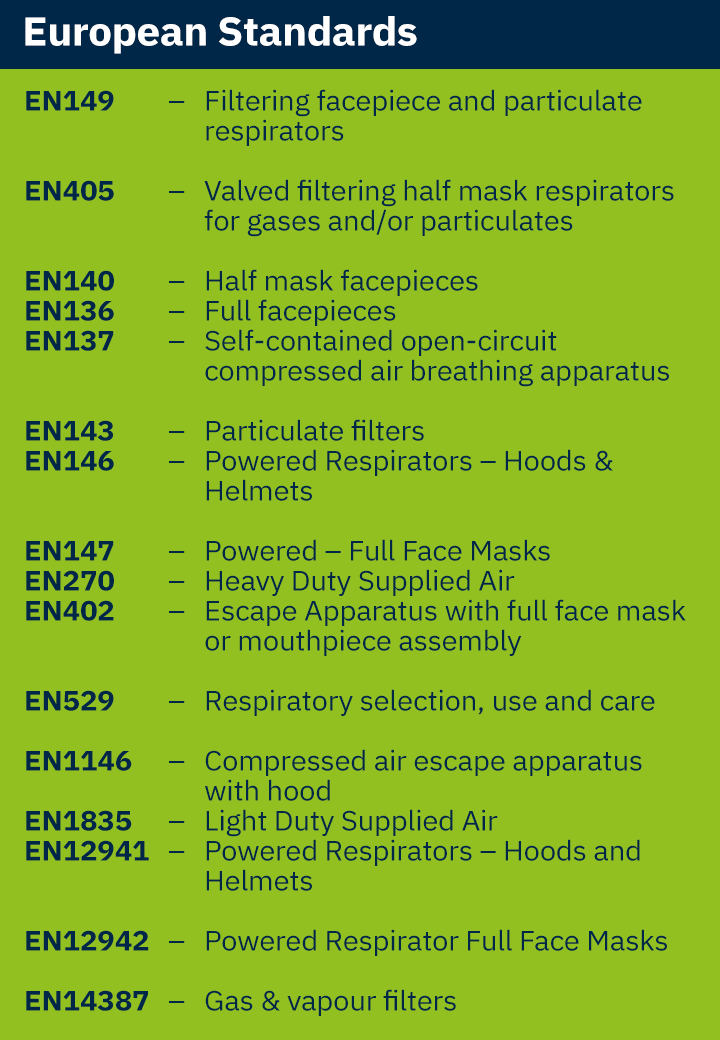

Congratulations, you've completed our guide!
Now you’re in the know on the importance of masks, how to overcome common objections to correct RPE at work and you’re an expert in all the relevant standards and accreditations.
You can search from CMT’s range of RPE and masks and find what you need to keep your site and staff safe at work.


